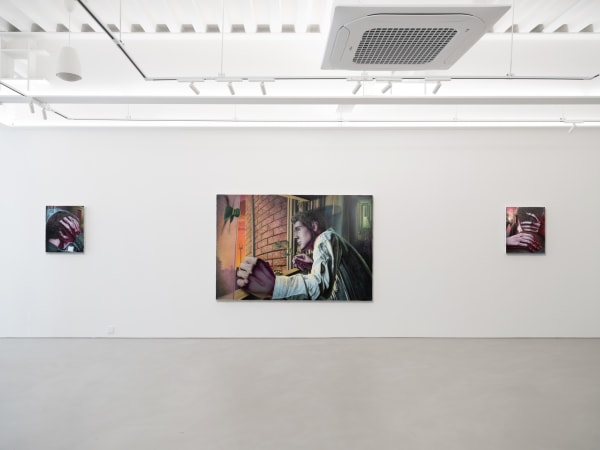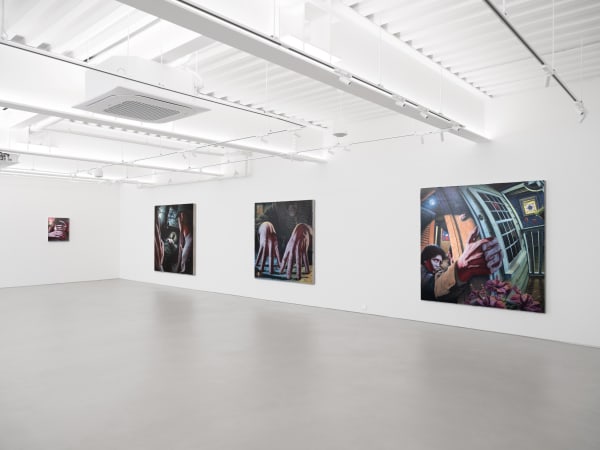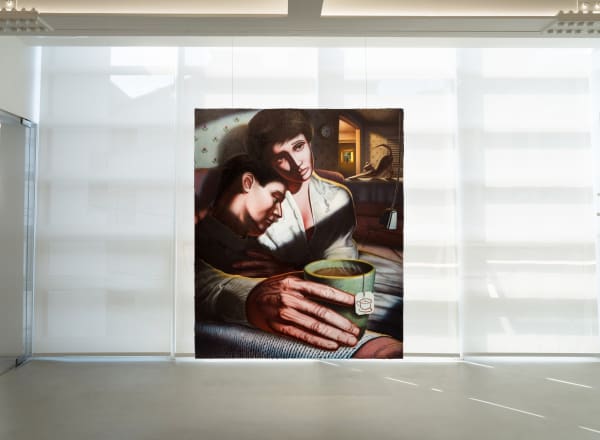Carter Flachbarth: Thrasherville
Flachbarth's artistic practice is centered on the idea of illusion, where he explores the relationship between space, light, and form. His work delves into the mechanics of illusions, engaging the viewer's perception to unveil the inherent deceptive nature of paintings. Often featuring sullen figures with highly expressive features, his paintings create narratives that delve into the psychology of the subjects through cinematic actions and gestures. Flachbarth's approach to the history of figurative painting combines traditional techniques with contemporary tools and imagery, drawing inspiration from the digital age and its wide accessibility to media. Raised in suburban America, Carter's connection to culture was primarily shaped by film and digital media, influencing his perspective on people, art, and the broader world.
In Thrasherville, Carter Flachbarth presents a new series of works that serve as autobiographical narratives. These narratives depict the gradual disintegration of a relationship and capture the complex emotions that evolve within and between the two individuals as they navigate this period of transition. Flachbarth combines elements of cinematic references with personal experiences to unfold vignette-style stories that express the mental and emotional states involved.
Adopting a filmic approach, the paintings focus on the environment as a medium for revealing the inner worlds of these characters. Surreal moments, distorted settings, and the presence of portal-like doors and windows serve as outward expressions of the emotional complexities woven into the characters' states. Repeated motifs, such as the charms suspended from ceiling fans, the recurring trident tower featured in numerous works, and the cage-like structures, unify these painted vignettes within a shared time and space. In this context, the environment becomes a complex and evolving character in its own right, playing a significant role in the intricate dance of the deteriorating relationship, a character whose significance is on par with the human subjects themselves.
Carter's paintings are characterised by a distinct motif: the hand of the figures. These hands serve as the cornerstone from which the entire composition evolves. This recurring theme is inspired by Albrecht's celebrated "Self Portrait" where the emphasis on the hand symbolises the significance of art-making to the artist's identity and alludes to the art of illusion. In Carter's work, the hands perform a dual function, serving as both subjects and creators, highlighting the cyclicality inherent in the world of art.
The exhibition title carries a twofold significance, evoking both a noir-inspired cinematic drama and referencing the historical name of Atlanta, where the artist resides. This duality provides a unique lens through which to explore the interplay of emotions in the realms of consumed media and lived experiences. It encourages viewers to reflect on how we often perceive our lives in an exaggerated, somewhat fictionalised manner, raising the question of how "main character syndrome" can simultaneously be hyperreal and illusory.
Text by Despoina Tzanou









